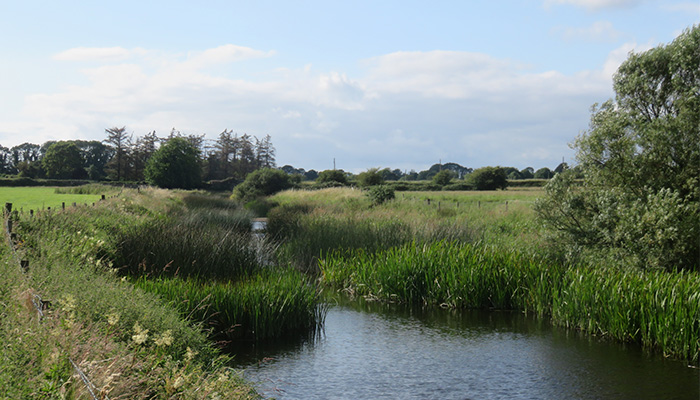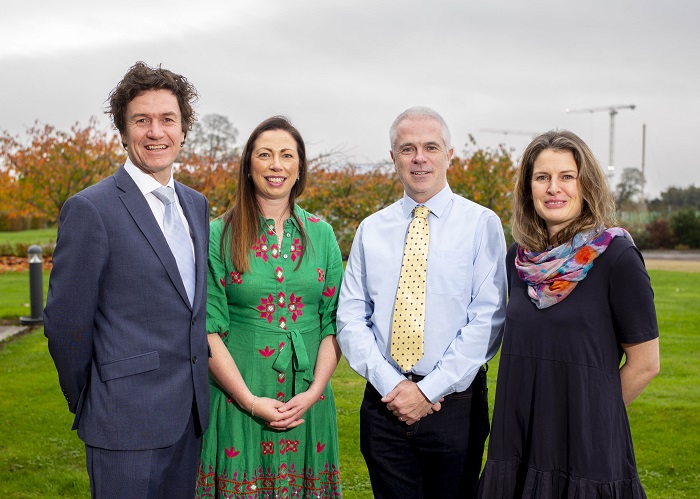13 November 2024
Opportunities to improve water quality must be grasped

As set out by the Water Framework Directive, Ireland, like all EU countries, is faced with the task of achieving good ecological status in all our water bodies by 2027.
To achieve this target, Dr. Daire Ó hUallacháin, a Principal Research Officer in the Teagasc Environment, Soils and Land-Use Department, encouraged farmers and the wider agricultural industry to grasp the opportunities that present to make improvements.
Speaking from the recently held Teagasc Sustainability in Agriculture: The Science and Evidence Conference, Dr. Daire Ó hUallacháin identified the key areas in which improvements are required, falling principally under the metrics of biology, physio chemistry and hydromorphology.
Additionally, the status of Ireland’s waters were outlined in detail. Quoting figures from the Environmental Protection Agency (EPA), he noted that 54% of our water bodies are achieving good ecological status – 14% of which are high. Although the most recent data available to provide a comparison is approximately eight years old, Dr Ó hUallacháin noted that Ireland ranks seventh of 28 EU countries in terms of water quality, but the continuous decline in the proportion of water bodies that are achieving high water status is a concern.
He explained: “When we look at the long-term trend for the last 30 or 40 years in relation to our river water bodies achieving good status, there’s been a marginal decline in those water bodies, with for example the percentage of rivers that are achieving good or high status declining from about 61% back in 1987 to the mid-50s that we’re seeing now.
“There was a period of improvement from the noughties up until about 2012, but unfortunately this period of improvement has stopped and there has been a marginal decline subsequently.”
N and P
Farmers throughout the country will be aware that nitrate levels in Irish waters are a concern, particularly with Ireland’s future with a Nitrates Derogation under the spotlight. Dr. Ó hUallacháin noted that 58% of water bodies are below the 8mg/ l NO3 threshold as set by the EPA, with water bodies in the western seaboard performing quite well, whereas parts of the south and south east are failing to achieve this threshold. When compared to our EU counterparts, he noted, Ireland ranks 20th out of 28 countries in terms of nitrate in rivers.
On the topic of phosphate, another key indicator of physio chemistry in Ireland’s water bodies, Dr. Ó hUallacháin noted 73% of our rivers are below the phosphate threshold of 0.035mg per litre of water, and 60% are achieving high status, resulting in Ireland being positioned in sixth of 28 EU countries in terms of P status of our river water bodies.

Pictured from left to right at the Teagasc Sustainability in Agriculture: The Science and Evidence Conference are: Dr. Daire Ó hUallacháin; Dr. Bridget Lynch; Dr Karl Richards; and Dr Saorla Kavanagh
Pressure on water quality
Highlighting the numerous pressures responsible for Ireland’s water quality status – all factors which will need addressing to achieve the targets as set out under the Water Framework Directive, Dr. Ó hUallacháin presented data from the EPA which highlights that agriculture is by far the most significant pressure on Ireland’s water bodies.
“That’s not surprising”, he commented, “considering that agriculture accounts for the largest land area. Approximately 70% of our land use is agriculture, so more or less every drop of rain encounters agricultural land at some stage.”
Across various industries, enterprises and land uses, however, he did note that a multitude of different pressures are at play, including nutrients, organic pollution, hydrology, and to a lesser extent factors such as chemicals and acidification.
The two primary nutrients of concern from an agriculture perspective are nitrogen and phosphorus and, although agriculture will face a challenge in improving water quality, Dr. Ó hUallacháin reminded the delegates in attendance of the science, the supports available and the backing from industry – three key elements in bringing about change.
He highlighted key initiatives such as the Agricultural Catchments Programme (ACP) – a programme which has contributed “to a huge advancement in relation to our knowledge and our understanding of the processes that govern the transport and the generation of nutrients and sediment within different types of catchments and under different types of enterprises” – and the Agricultural Sustainability Support and Advisory Programme (ASSAP), which has facilitated over 6,500 consultations between farm advisors and advisors.
Tools available to advisors and farmers were also discussed, including Pollution Impact Potential Maps, Nutrient Management Planning programmes and the recently launched Teagasc Better Farming for Water- 8 Actions for Change campaign.
The latter, he explained, is a seven-year, multi-actor campaign that aims to support farmers to adopt actions that will improve water quality to good or high status, focusing on three critical management areas – nutrient management, farm yard management, and land management.
Concluding his presentation, Dr. Ó hUallacháin said that given the developments in science, industry support and the tools available to advisors, agriculture has never been in a better position to address water quality.
“We’ve never had a better understanding of the science that governs the processes in relation to nutrient generation and delivery of nutrients to water bodies. We have never had more mitigation measures available to us and more tools to target mitigation measures to ensure that they go in the right place.
“We have never had more highly skilled people working to deliver an impactful, insightful, and effective knowledge transfer campaign. We have never had more resources dedicated towards improving water quality, be it from government, state agencies, NGOs or be it from industry.
“We have never had more actors working in this space. There’s never been such an appetite to improve water quality amongst all stakeholders, including the wider public, but most importantly from farmers.
“I think it would be a monumental missed opportunity if we didn’t utilise the position that we’re currently in and I think it’s incumbent on all of us to now grasp this opportunity to improve water quality,” he concluded.
Dr. Ó hUallacháin full presentation to the Teagasc Sustainability in Agriculture: the Science and Evidence Conference is available to view below:
More insights and the full proceedings from the conference are available to view here.
Also read: Livestock provide much more than nutritious food – Senior FAO official
